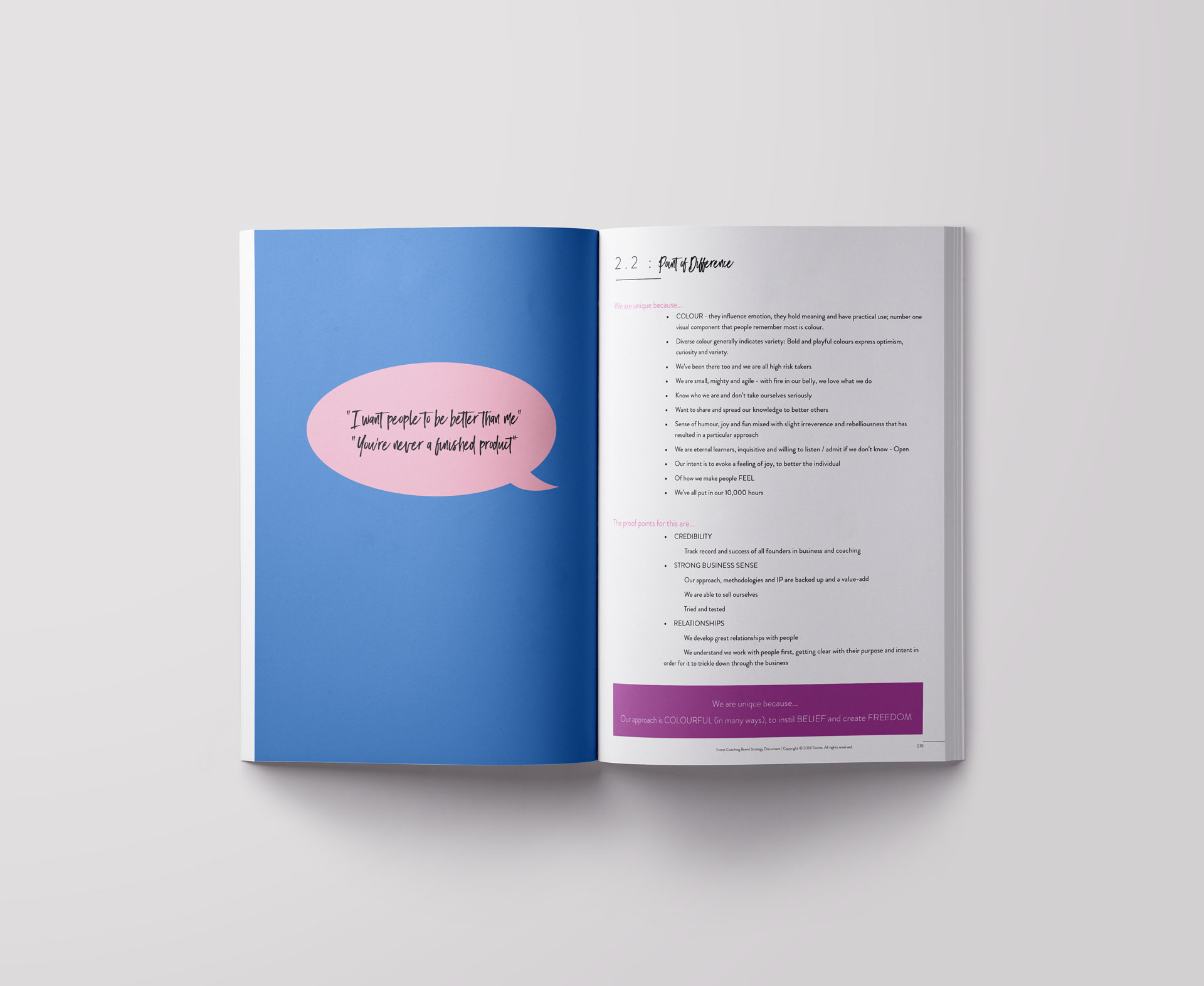So – now you have your brand strategy figured out, documented and everyone gets it; you have a logo you’re delighted with, a colour palette to die for, fonts that help communicate your message clearly and some fab images and graphics…..
How these are used is all down to interpretation; give the same set of creative assets to any designer and they’ll produce you something different, every time.
A successful brand helps to communicate what your core product is, what sets you aside from your competition and should be applied consistently across everything you do.
This is where guidelines are key to helping maintain a consistent visual message, each time: now you’ve invested in getting it right, it needs to be on point every time!
Brand guidelines define how all the wonderful creative elements that make up your brand identity system are used and fundamentally frames how your business communicates with your audience.
They are a set of ‘rules’ to create a unified identity when connecting multiple elements within your brand, such as colours, your logo, and your typography. By wrapping some ‘rules’ around their use, it helps protect your visual identity and tone.
You may also like:
What are brand boards, style guides and guidelines and why do I need them?
What exactly is the difference between brand and branding?
5 things to avoid when branding your business
Here are my top 5 reasons why they are particularly handy:
1. Curate perception
I’ll keep banging this drum!! Your website, business card, every piece of marketing material builds perception of your brand to the market in addition to the products and services you offer. Perception is everything with brand and so guidelines make it possible to communicate a consistent brand identity to reinforce perception, build recognition and gain trust – these are not achieved overnight.
Consistency is important in making your brand recognisable and reliable. It ultimately communicates that your brand takes pride in the details.
2. Alignment
Your brand guidelines are a great way to get everyone up to speed and on the same page with your brand. They are composed of ‘rules’ on how to use your brand’s visual elements. These rules will include space allowance for the logo, colour palette and hierarchy of its use, when to use a logo versus a wordmark, and the hierarchy of typography.
New employees, agencies, third parties can easily get to grips with your brand with guidelines. Growth, new product lines, growing team can all lead a shift in focus with the brand story. Stay on track with guidelines.
3. Instantly recognisable
Guidelines can help you create a marketing tool, on the next level…
Keeping your brand consistent allows it to be more immediately recognisable within your industry and with your target audience. This can take a lot of time, but your brand can quickly be distinguishable by adhering to your brand guidelines. If you consistently go to market, you are more likely to creep into your audience’s awareness, psyche and mind space.
No matter how big or small your business is or whether you are consumer focused or a B2B service provider, you will benefit from developing and maintaining a recognisable brand.
Eventually, your brand will be so consistent, so synonymous with your product experience that when a consumer sees your signature brand logo, they are already thinking about making their next purchase from you without you even having to ask.
4. Keep it creative
Guidelines doesn’t mean that all of your communications have to look exactly the same, far from it, but it does mean that you should strive for visual cohesion. Make sure you stick to a number of standards, such as your colour palette, visual style, font, size and spacing of your logo, image tonality and application / balance of colour.
Another way to illustrate this, and a time to fuse two of my loves – design and food: Your brand guidelines should be seen as a recipe book with all your elements being the ingredients.
You have all the ingredients, specially grown, nurtured, picked and packaged for you; you know the limitations of your audiences’ palettes, tastes and habits; restriction in the kitchen of you can and cannot achieve but it doesn’t stop your chefs creating different dishes of a similar flavour. Hungry?!
5. Building value
When a brand’s identity is cohesive, it increases the brand’s perceived value. Consistency allows your brand to appear and operate in a more professional and reliable manner. By implementing brand guidelines, you make it easier to maintain the quality and integrity of your brand’s image. Documenting your brand also increases its market value – it becomes a tangible asset.
It’s a long-standing concept that purchasing is more an emotional decision than a practical one.
Keep your visual identity and key messaging consistent and you’ll effectively develop and strengthen your brand, helping your business make a far stronger, long lasting impression: this is all about building trust.
When consumers feel like they know you and can trust you, they will be more likely to purchase from you and more likely to recommend you to their peers, building advocacy and your own fan club.
Winner.
Share your brand guideline stories with us – have you ever had an epic fail with them? A time when they have saved your bacon, time and money? Are you from the school of thought that doesn’t believe in them?






